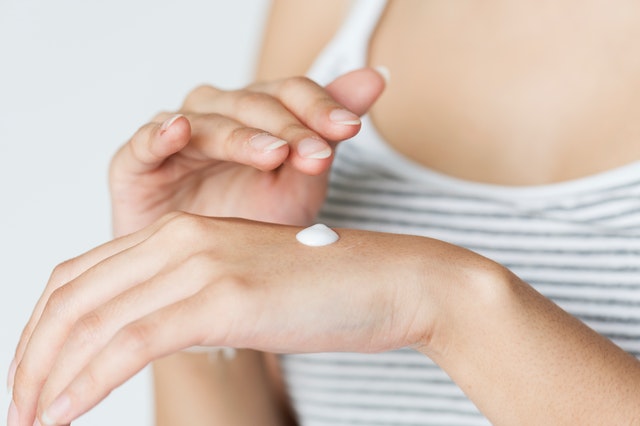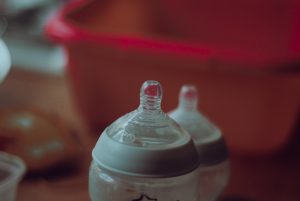Many moms are discouraged to nurse when breastfeeding hurts. The breasts and nipples become tender, aching, and sore due to several underlying reasons. For painful breasts, these are often due to breast engorgement, blocked milk ducts, and leaking breast milk. Nipples become cracked and sore because of improper latching, teething, or dry skin.
These 4 easy quick soothing techniques for breastfeeding pain relief have been recommended by experts to help solve the most common breastfeeding problems. Find out what’s causing your breastfeeding pain and how to alleviate it in this article!
In A Nutshell…
- Breastfeeding pains are not uncommon. As much as 90% of breastfeeding moms feel breast pain and nipple soreness at the start of their breastfeeding journey.
- Breast pains are most often due to breast engorgement, blocked milk ducts, or leaking breast milk. Nipple soreness can be due to improper latching, teething, or dry skin. Thrush, mastitis, and tongue-tie can also bring about a painful breastfeeding experience.
- Using hot and cold therapy, reverse pressure softening, proper latching and breastfeeding creams and products are the best tips and techniques to ease painful breastfeeding.
When Breastfeeding Hurts: Common Causes of Pains

It’s not uncommon for first-time breastfeeding moms to experience pain when they just started nursing. According to the American Pregnancy Association, as much as 90% of moms have some form of breast pain or nipple soreness. Breastfeeding discomforts often peak on the fifth day of breastfeeding, but should eventually go away after a few days of nursing.
However, although prevalent, there are many underlying reasons why these breastfeeding pains can be felt.
What causes nursing breasts to hurt?
1. Breast Engorgement
An increased breast size during pregnancy and postpartum is totally normal. In fact, it’s your body’s way of showing how it’s preparing for milk production and breastfeeding.
Although you already felt that your breast size has significantly increased during pregnancy, your boobs can get even bigger after delivering your baby. Once breast milk starts flowing at around the third or fourth day after birth, your breast will become heavier and fuller as they get filled up. However, this fullness from breast milk and increase blood flow can make breast tissues swell, making your boobs feel heavy, hard, lumpy, and painful.
2. Blocked Breast Milk Ducts
Your breasts are made up of several small and narrow milk ducts. These are responsible for transporting the breast milk from the milk glands to your nipples. Whenever one of these ducts do not get fully drained, it can create a plug and become blocked. Lumps in your breasts, white dots on the nipple, and breast skin turning red are just some signs that your milk ducts may be blocked.
Leaking Breasts
More often than not, a leaking breast is just an inconvenience for many moms. This is triggered by the milk letdown, a reflex which stimulates lactation. Although very rare, some moms may experience tingling pin-pricking sensations as well as a little pain around the breast and nipple area.
What causes sore nipples?

Incorrect Latch
Having a proper latch is essential for any successful breastfeeding journey. Not getting your baby to latch right can lead to your child not getting to feed well, decrease milk supply, and nipple discomforts. Your nipples can become tender, sore, and cracked.
Teething
The teething phase can leave both the mother and the baby frustrated. Your baby’s response to teething discomforts is through constantly biting and chewing, even on your sore and sensitive nipples.
Dry Skin
The repeated latching and suction of your baby during breastfeeding can be rough for your nipples. Thus, the nipple skin becomes more dry and dehydrated. When the nipples’ skin is dry, nursing can become painful.
Other causes of breastfeeding discomfort
Thrush
Yeast infections can also happen in your breasts and can be transmitted through breastfeeding. In nursing moms, these are called thrushes and can also manifest as white spots on your baby’s mouth. Thrush, although common, can make breastfeeding excruciatingly painful. Moms with cracked nipples are a higher risk of contracting the infection.
Mastitis
An unplugged milk duct can eventually result in mastitis, a type of breastfeeding infection. This causes severe and unbearable breast discomfort along with hardened breast and fever. Mastitis is a serious breastfeeding problem that should be consulted with a physician as soon as possible.
Tongue-Tie
Some babies are born with tongues that are wrapped with a short, tight, and thick band. This is termed as ankyloglossia or tongue-tied. Although a very rare and harmless condition for your little one, it can make breastfeeding extra challenging and painful as the baby needs to suck harder and longer in order to feed well.
Techniques to Relieve Breastfeeding Pains Instantly
Hot and cold therapy to sore breasts and nipples
Common breastfeeding pains like breast engorgement and blocked milk ducts can be remedied through hot and cold therapy. By practice, applying warm moist heat can help soothe sore nipples and heal cracked skin faster. Alternatively, using cold compresses to the breast in between nursing can decrease the swelling and provide instant relief.
Fortunately, there are so many breastfeeding products that provide hot and cold therapies. They appear in the form of gel pads that can hold onto hot or cold temperatures for longer periods of time.
Reverse pressure softening
Reverse pressure softening is a simple gentle massage technique that is used to deal with breast swelling. Swollen breasts can happen to breastfeed moms either due to breast engorgement or the IV fluids given during birth. When this is the case, the nipple becomes to flat and makes it hard for babies to reach or latch onto the nipple.

Source: https://www.facebook.com/EASYMAX-Baby-Care-1698455737073168/
Other benefits of the reverse pressure softening include:
- Continuous stimulation of nerves under the areola which naturally triggers lactation
- Excess interstitial fluid is moved temporarily in the direction of natural lymphatic drainage
- Milk is displaced slightly backward deeper into the milk ducts
- Nipples get to be extended more deeply into the baby’s mouth
- Helps breast respond to the rippling of a baby’s tongue
Proper Latching
The usual breastfeeding pains and problems are mostly due to an improper latch. Babies need to be positioned well in order for them to get to hold a tight latch. Consequently, the timing of feeding sessions should also be observed. Without the right position, timing, and technique of a latch, a mother’s nipple can become distressed.
Finding The Right Breastfeeding Position
To properly latch your baby, first consider the best breastfeeding position. Make sure that the baby’s head, neck, and spine are aligned. The chin should face up and not downwards towards the chest. Lastly, find one that will be comfortable for you and your baby. Here are your options:
- Laid Back/Lying Down
- Using a: bed, couch, chair
- Position: Lie down. Put your baby’s front against your chest so that your body lengths are parallel, with his cheek resting on one breast. Support the baby’s bottom and feet while feeding.
- Cradle:
- Using a: chair
- Position: Lean back a little, but don’t hunch. Whichever breast you choose to feed on, let that arm support the baby. Put your baby’s front toward your chest and have him rest on your arm, perpendicular your body.
- Cross Cradle:
- Using a: chair
- Position: Similar to the cradle position, but use a pillow on your lap to support the baby instead of your arm/forearm, with your hand supporting baby’s head.
- Football/Clutch:
- Using a: chair
- Position: Similar to the cradle position, but for this one, the baby should be under your arm (the same side as the breast you feed on). Pillows should support the baby’s weight
Natural nipple relief creams and products
Nipple creams and other products, while not the cure for breastfeeding pains, can be a primary quick relief for sore and tender nipples. It should be noted that products containing lanolin should be avoided as they can cause allergic reactions. Lanolin also has a strong scent and flavor which may make the baby refuse to breastfeed.
There are some popular organic nipple balms that use calendula and coconut oil which can give a soothing and moisturizing effect on cracked and pained nipples. In addition, there are also external products that can be used like breast shells and milk catchers that allow milk to let down and prevents engorgement.
The Bottom Line…
Breastfeeding discomforts can be brought about by many underlying causes. Breast pains usually happen because of breast engorgement, blocked milk ducts, and leaking breast milk. For cracked and sore nipples, it can be due to improper latching, teething, and dry skin. In some cases, thrush, mastitis, and tongue-tie can contribute to breastfeeding pains.
To help soothe and relieve the pain, it’s best to practice hot and cold therapy, reverse pressure softening, correct latching, and using natural nipple relief creams and products.
Want to know the solutions to 4 other dreaded breastfeeding pains? Here’s an article on how to Troubleshoot During Breastfeeding!







